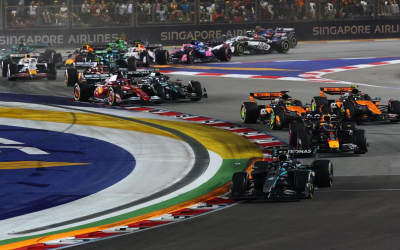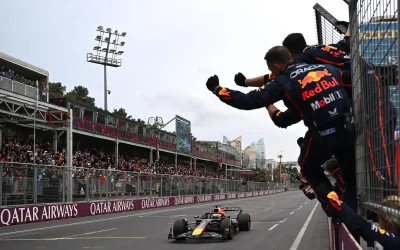Starting from the Spanish Grand Prix , the FIA will introduce a new technical directive. It’s aim is to limit the flexing of front wings . This measure was adopted by the FIA to guarantee greater fairness and ensure all the cars respect the fundamental principles of the technical regulation.
As for the rear wings, there will be more news starting from the Australian GP. However, it should not be anything too drastic – since the FIA has already addressed the much talked about mini-DRS seen in Baku on the MCL38.
This innovation, which was put on trial by Red Bull soon after, gave rise to the ‘technical war’ at the end of 2024.
Red Bull: A 2024 awaiting FIA decision, trying to solve correlation problems on RB20
The 2024 Formula 1 season has seen a surprising turnaround since the Miami GP, with Red Bull losing its dominance to McLaren.
This change has been largely attributed to the introduction of the so-called “flex wings”. These wings are an innovative aerodynamic solution that allows teams to balance between grip in slow corners and stability at high speeds .
As a result, there flexi-wings overcome problems low-speed understeer and high-speed oversteer, thereby significantly improving the overall car performance.
This approach has allowed the use of stiffer suspension without compromising aerodynamic balance, transforming McLaren from an outsider to a competitive leader and thus overtaking Red Bull’s previous supremacy .
“We realized that aeroelasticity had unexplored potential and so we pushed like crazy in that direction,” admitted Andrea Stella a few months ago.
Then came Mercedes with their own version , via a front wing that debuted in Monaco. Of the top teams, Ferrari were the last of the top teams to make their own version, which they brought to Austin.

Red Bull? The Milton Keynes team was somewhat taken aback by the effectiveness of the flexible wings introduced by its rivals.
Pierre Wache , Red Bull’s technical director, acknowledged that these innovations allowed rivals to rebalance their cars and outperform Red Bull.
It was also clear that Red Bull were struggling with major correlation issues. This meant there lack of a ‘flexing’ front wing specification was only one of the RB20’s problems – and far from the biggest.
Red Bull, along with Ferrari, repeatedly urged the FIA behind the scenes to investigate the legality of these designs, questioning whether the flexible wings were beyond the bounds of the regulations.
However, the FIA found no infringements , leaving Red Bull to face new technical challenges without any regulatory intervention in its favour.
Red Bull furious over new directive, after investing big budget on flexible wings
At one point in the season, the FIA also decided not to tighten or add any more tests (for 2024 to 2025) on flexi wings:
“We were convinced that the FIA would ban these wings after the installation of the new cameras from the race in Belgium,” explained Fred Vasseur.
“However, they decided otherwise and that cost us one or two months .”
While Red Bull was trying to analyze and understand the correlation problems of the RB20, not dedicating resources to aeroelasticity, Ferrari made an aggressive choice to bring its first real version of a ‘flexible’ front wing to the track.
This allowed the SF-24 to take further steps forward after the Monza updates, winning at Monza and Mexico. During the second half of the season Ferrari were as fast as anyone.

Christian Horner’s team wasn’t too worried, however. After all, they had a whole winter to make up ground accumulated by their competitors from the aeroelasticity of these ‘flexi-wing’.
Milton Keynes invested a lot of time and money in improving the flexibility of RB21’s wings – only to discover the FIA’s U-turn on flexi-wings and their regulation.
As reported by AutoRacer, the FIA has decided to tighten its tests on front wings.
They will more tightly scrutinize how much the front wings flex during static tests. This will apply to both the internal (from 3 mm to 2 mm) external flaps (from 15 mm to 10 mm).
There is a strong belief among rivals that it was McLaren who put pressure on the FIA for the tougher tests – after a season finale where Ferrari showed excellent competitiveness and Red Bull showed signs of overcoming their correlation issues.

Often it is often those who have a certain advantage, in terms of innovation, who are the first to act in trying to limit a certain technical solution – having often already studied an alternative.
Incidents like this have happened previously, including in the so-called ‘oil war’. At the time, when lubricant was used to increase the engine power, Mercedes began asking for clarifications.
This request was made with Ferrari in mind, once the Maranello understood the trick Mercedes had previously used.
It is clear that teams must review their aerodynamic solutions. Previous designs will have to be revised in light of the FIA’s new directive.
This has cost teams from a time and budget perspective. This is especially true for Red Bull, with the Milton Keynes team furious at their resources being wasted.




